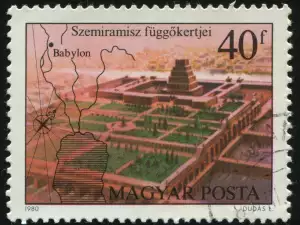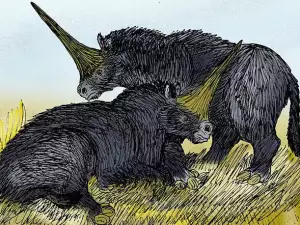The Golden Fleece is one of the most well-known objects in Greek mythology. According to the legends, it is the fleece of the ram which Phrixus and Helle rode on across the sea to escape their stepmother Ino. As thanks, Phrixus brought the ram to Colchis and sacrificed it to Zeus.
Years later, when Jason asked Pelias to give him his power back, Pelias told him to bring back the Golden Fleece. So, the Argonauts set out on an epic quest to find and bring it back to Iolcos.
Even today, in West Georgia, there exists a region called the Kingdom of Colchis. Georgian scientists from Tbilisi State University believe that its residents really did possess the Golden Fleece. However, according to them, it was not exactly a gift from the gods but rather, just an object crafted by human hands.
In ancient Greek mythology, the Fleece was the golden wool of the ram. It was on its very back that Phrixus and Helle, the children of the Athamas, king of Boiotia, and Nephele (goddess of clouds), escaped from their stepmother Ino across the sea. Upon reaching the safety of Colchis, Phrixus made a sacrificial offering of the ram to Zeus the Thunderer.
The next legends, related to the Fleece, are those of Jason and the Argonauts, who sought it in order to get the vile Pelias to give back his rulership over Iolcos.
But according to Georgian scientists, this highly sought-after Golden Fleece was not unique. They theorize that perhaps thousands such existed. Every ram's fleece might have been turned into a Golden Fleece, which the inhabitants of Colchis used to obtain the precious metal from their rivers.
In the mountainous region of Svaneti in Northwest Georgia, the rivers brought golden dust from the Caucasus. To extract it, the locals used rams' fleece. The gold dust and particles were caught in them. Then they were picked from the fleece by hand.
That is how Georgian experts theorize that the legend of the Golden Fleece arose out of the ancients' practice of gold collecting. Likewise, the myth of the Greeks sailing to Colchis in search of the Golden Fleece is not without its own logical explanation. It is quite possible that the objective was to discover the secrets of obtaining gold with rams' wool.
The Greeks first learned of Colchis in the 6th century B.C. That is when they founded their first Greek colonies there as well. In 1984 it was scientifically proven that there could have been a link between ancient Greece and the Caucasus.
This proves the 2-month voyage of British explorer Tim Severin from Greece, through the Aegean and Black Sea to the shores of Georgia. It was done using a boat constructed based on an ancient Greek design.










